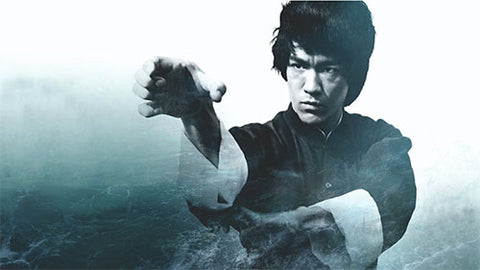
Martial Arts and ADHD: Which Style Is Best for Your Child?
Share
Whether kickboxing, Jeet Kune Do, or Krav Maga, martial arts are a perfect fit for children with ADHD. They regulate both physically and emotionally —and can be as beneficial as medication.
Here is an overview of 5 popular styles and links to the schools:
Krav Maga
- Inventor: Imi Lichtenfeld (1910 – 1998); developed Krav Maga in the 1930s and 1940s and later trained the Israeli army. ( en.wikipedia.org , kravmaga-ikmf.com )
- Style: Realistic self-defense without forms or belts; age-appropriate modules at KMG / IKMF with role-playing and stress drills.
- Provider (Switzerland):
Zurich – IKMF Krav Maga Zurich | Bern – IKMF Kids Bern | Basel – Krav Core Basel | St. Gallen – IKMF Center St. Gallen ( kravmaga.ch , kravmaga.ch , kravcore-basel.ch , kravmaga.ch )

- Advantages:
- Fast learning effect, directly applicable protection techniques.
- Strengthens self-confidence and stress resistance.
- No competitive pressure, therefore inclusive even for those who are not sporty.
- Disadvantages:
- Teaching quality varies greatly depending on the instructor's certification.
- No belts / tournaments – extrinsic motivation may be lacking.
- Realistic scenarios can be stressful for sensitive children.
Jeet Kune Do
- Inventor: Bruce Lee (1940 – 1973); coined the name "Way of the Intercepting Fist" in 1967. ( en.wikipedia.org , bruceleefoundation.org )
- Style: Principle instead of style – free combination of Wing Chun, boxing, fencing; focus on timing, distance, and creativity, small Inosanto lineage schools throughout Europe.
- Provider (Switzerland):
Zurich – JKD Educational Academy | Bern – JKD Academy Bern | Basel – Shaolin Basel – JKD | St. Gallen – PFS Herisau (JKD Concepts) ( instagram.com , shaolin-basel.ch , shiftyourself.ch )

- Advantages:
- Promotes free thinking and adaptability.
- Versatile movement landscape without rigid forms.
- Ideal for children who love creative freedom.
- Disadvantages:
- Hardly any competitions or belts – motivation can suffer.
- Qualified trainers are rare outside of major cities.
- Abstract approach requires mature attention.
karate
- Inventor/Modernizer: Gichin Funakoshi (1868 – 1957), father of Shotokan, brought karate to Japan's main island in 1922. ( en.wikipedia.org )
- Style: Traditional striking and blocking art; Kata, Kumite, clearly graded belts; around 2400 DKV clubs in Europe, special children's badge "Little Samurai".
- Provider (Switzerland):
Zurich – Shukokai Seikenkan Karate Do Zurich // Karate Academy Zurich | Bern – Karate Kai Bern | Basel – Karatekai Basel | St. Gallen – Karate-Do St. Gallen ( karate-akademie.ch , karate-bern.ch , karatekai-basel.ch , karatedostgallen.ch )

- Advantages:
- Pedagogically proven structure and values.
- Belt tests provide continuous success.
- Dense club landscape – short distances to training.
- Disadvantages:
- Rigid technical drill, ground fighting hardly represented.
- Danger of routine if kata is trained one-sidedly.
- Competition rules limit self-protection realism.
Taekwondo
- Inventor: General Choi Hong Hi (1918 – 2002); formalized Taekwondo in 1955 and founded the ITF. ( itftaekwondo.com )
- Style: Dominant jumping and spinning kicks, Olympic competition focus; World Taekwondo Europe promotes kids' events and development programs.
- Provider (Switzerland):
Zurich – Martial Arts Zurich // Taekwon-do Terranova | Bern – Taekwondo Bern | Basel – Taekwondo School Basel | St. Gallen – Grand Sports Academy ( kampfkunstzuerich.ch , taekwondobern.ch , taekwondo-bs.ch , taekwondo.ch )

- Advantages:
- Enormous agility and explosive power.
- Motivating belt and tournament structure.
- International recognition up to the Olympic stage.
- Disadvantages:
- Focus on leg techniques, little fist and clinch work.
- High kicks put strain on the knees and hips.
- Some dojangs prioritize competition over self-defense.
Kickboxing
- Inventor/Organizer: The modern form of kickboxing originated in Japan in the 1960s. The sport was originally called full-contact karate and was "invented" by Osamu Noguchi, a Japanese boxing promoter. Georg Brueckner (1930–1992) founded WAKO in Berlin in 1977, laying the foundation for modern kickboxing in Europe. The Thai variant is called "Muay Thai" and dates back to centuries-old unarmed martial arts. ( wako.sport )
- Style: Blend of boxing and karate/Muay Thai kicks; point, light, and full contact; for children, a focus on protective equipment, interval fitness, and technique. The 2025 WAKO Youth European Championship shows strong growth among young athletes.
- Provider (Switzerland):
Zurich – Kickboxing School Zurich | Bern – Fighters Club Bern | Basel – Kickbox Club APEX | St. Gallen – St. Gallen Martial Arts Center ( kickboxing-zh.ch , fightersclub.ch , kickboxclubbasel.ch , kampfsportcenter-sg.ch )

- Advantages:
- High calorie consumption and strong stamina.
- Clear scoring standards promote fairness and self-control.
- The “coolness” factor also appeals to young people who are tired of sports.
- Disadvantages:
- Real hits despite pads – bruises unavoidable.
- Contact-heavy training requires robust basic fitness.
- Little focus on verbal de-escalation in everyday conflict.
In short: From uncompromising self-defense (Krav Maga) to philosophical freedom (Jeet Kune Do) to Olympic high kick (Taekwondo) – Europe's children today enjoy a wide range of martial arts.
It's also crucial whether your child is looking for more structure, creativity, showmanship, or pure fitness and effective self-defense. It's better to try than to study!
